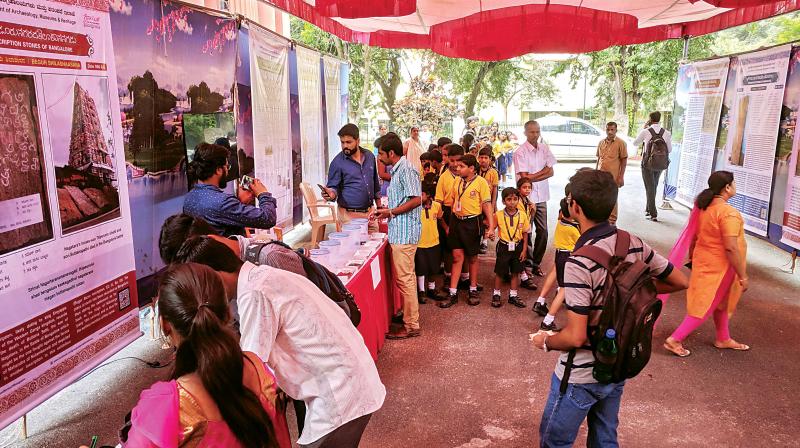Bengaluru's history dates back to 750 CE!

Bengaluru: Dr T.S. Ravishankar, former director of the epigraphy branch of the Archaeological Survey of India, Mysuru, was the first to arrive at the government museum on Tuesday morning.
The citizen-driven exhibition on the inscription stones of Karnataka had, no doubt, caught the interest of one of the country's most celebrated epigraphists: “I haven’t seen an exhibition like this," he said brightly, proceeding to give visitors a demonstration on the stampage process, through which inscription stones are deciphered and recorded.
A steady trickle of visitors made their way to the back of the museum, where posters of 28 inscriptions from Bengaluru are lined up. History buff Dhanpal joins Udaya Kumar PL, one of the exhibition’s organisers in collaboration with the Government Museum, walked visitors through the exhibits. “The idea is quite simply to show people that they are surrounded by history, which needs to be preserved,” says Kumar, as his audience nods a vigorous assent. The 28 inscriptions chosen for the exhibition retrace Bengaluru's history back to around 750 CE and were documented by BL Rice in his 12-volume series, Epigraphica Carnatica. The inscription in Kodigehalli, for instance, which Kumar describes as his favourite, dates back to 1432 and talks about a grant made in lieu of an eclipse that took place on August 9 that year. “The word ‘kodige’ means gift and the area was named after this," he explains. "The gift was the grant made to the nearby temple and this inscription records it.” The stampage demonstration took place on a four-foot Tamil inscription, recovered recently from Sadaramangala, which has been laid out in a corner. NIAS researcher Maniganda Ranganathan, says it was spotted by a slum dweller who recognised the Tamil script engraved on the stone. The owner of the land didn't want us anywhere near it, he even threatened me with violence," he recalls, although the stone was moved to the Government Museum about a month ago.

